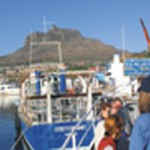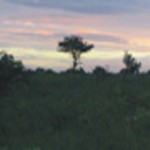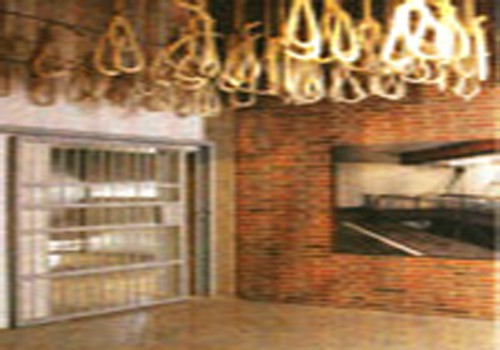
South African Diary 3
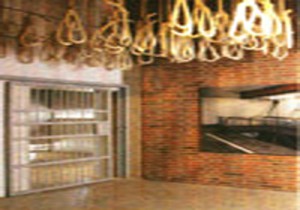
I was in the last phase of my stay in the Gauteng province and on the agenda was a visit to the Apartheid Museum and Soweto. No trip is complete to Johannesburg without visiting these two very historical venues.

South Africa, a beautiful country was cut off from the world due to apartheid. The Apartheid Museum takes you back in history to remind you of what the old South Africa was and today a visit to the museum reminds you of how wonderful it is to live in the free world. The experience begins right from the ticket counter, where some of the tickets have WHITES and some have NON-WHITES printed on them.On arrival, you are separated according to racial classification for your first encounter with apartheid.
As rightly said, a visit to the museum is a journey back in time and to understand the significance of freedom and equality.
The exterior of the museum brings to you images of detention, oppression and sets the stage for the visit through the darkest years of South African history. The Apartheid Museum, the first of its kind, illustrates the rise and fall of apartheid: The racially prejudiced system blighted much of its progress and the triumph of reason crowned half a century of struggle.
The Museum has been assembled and organized by a multi-disciplinary team of curators, film-makers, historians and designers. An architectural consortium comprising several leading architectural firms, conceptualized the design of the museum on a seven-hectare site.
At the entrance are the seven pillars of the new constitution of South Africa. On each pillar are each of the seven fundamental values of the constitution, viz democracy, equality, reconciliation, diversity, responsibility, respect and freedom. However, the most striking of all is Nelson Mandela’s quote in June 1999 which stands out on one of the stones in front of the main entrance of the museum and reads as follows – “TO BE FREE IS NOT MERELY TO CAST OFF ONE’S CHAINS, BUT TO LIVE IN A WAY THAT RESPECTS AND ENHANCES THE FREEDOM OF OTHERS.”
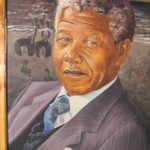
Finally, you will bear witness to the unravelling of Apartheid and the release of the world’s most famous prisoner and subsequent president – Nelson Mandela.
After having spent time at the Apartheid Museum, we headed south of Johannesburg and into Soweto. Soweto is a township which was developed for black people under the apartheid system. Most of the struggle against apartheid was fought in and from Soweto. The name Soweto is an acronym, made up – in apartheid days – from the first letters of the words “south western township.
First we visited Hector Peterson’s Memorial. The Hector Peterson Museum opened on Youth Day, 16 June 2002 to commemorate the event that took place almost 26 years ago. Hector, 12, was one of the first casualties of the Soweto uprising of 16th June, 1976, when over 500 people were killed as they protested over the imposition of Afrikaans as a medium of instruction in township schools. A news photograph of the dying Hector being carried by a fellow student, was published around the world.
Later we visited Nelson Mandela’s House which is turned into a museum and is located on Vilakazi Street. It is now converted into a museum and was the four roomed home of Nelson and Winnie Mandela and there are various memorabilia on display in this compact house. It is one of the most popular tourist attractions for those who visit Soweto. This is the place where Mandela used to live before he was imprisoned for 27 years.
A visit to Soweto isn’t complete if you do not savour some fine cuisine at one of the shebeens and we were lucky to visit one of the finest restaurants as part of the FUNDI trip- I am referring to the Nambitha Restaurant.
The cuisine at Nambitha is a delectable experience of various cuisine from different ethnic regions served in the midst of a great exhibition of classic photographs from some of the world-acclaimed photographers. The restaurant is located on Vilakazi Drive, a few minutes away from the famous street where two of South Africa’s greatest sons, Dr Nelson Mandela and Archbishop Desmond Tutu have their residences. The locals at Nambitha are extremely hospitable and the experience of a sumptuous meal will leave you wanting to return again in the future.
The next day we took a flight to arrive at Durban, and headed to our next destination – the Hluhluwe Game Reserve. We were now in KZN and we would in the next 3 days visit Hluhluwe, Phinda and Shakaland – the heart of Zulu Culture. The Kingdom of Zulu is a melting pot of African, European and Indian cultures washed by the shores of the Indian Ocean.
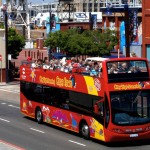
On arrival at Durban, we did a brisk city tour by coach before heading west into the Hhluhuwe- Umfolozi Park an approximate 5 hour drive from the city of Durban. Durban to a great extent is mini-India as it is inhabited by a large number of Indian immigrants.The city of Durban comprises of almost 15% of the Indian population and has one of Africa’s busiest ports. Durban’s beachfront is also known as the Miami beach of South Africa and it has innumerable luxury hotels on the beach front.
Hluhluwe is one of the oldest reserves in Africa and is the home to the big 5 – the leopard, lion, rhino, buffalo and elephant. On arrival at the Hluhluwe Game Reserve Memorial gate, we followed the posts and reached the Hilltop Camp, one of the oldest in the Kwa-Zulu Natal province.
For more on the Hluhluwe reserve, you will have to wait until the next issue of Opportunities Today.
(To be continued)
SubhashMotwani – South Africa Fundi (Expert)


